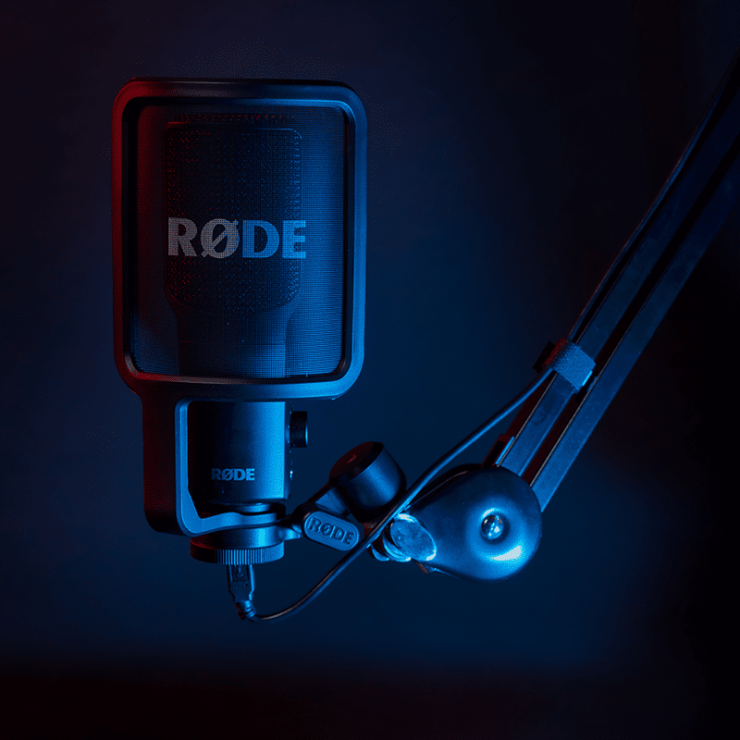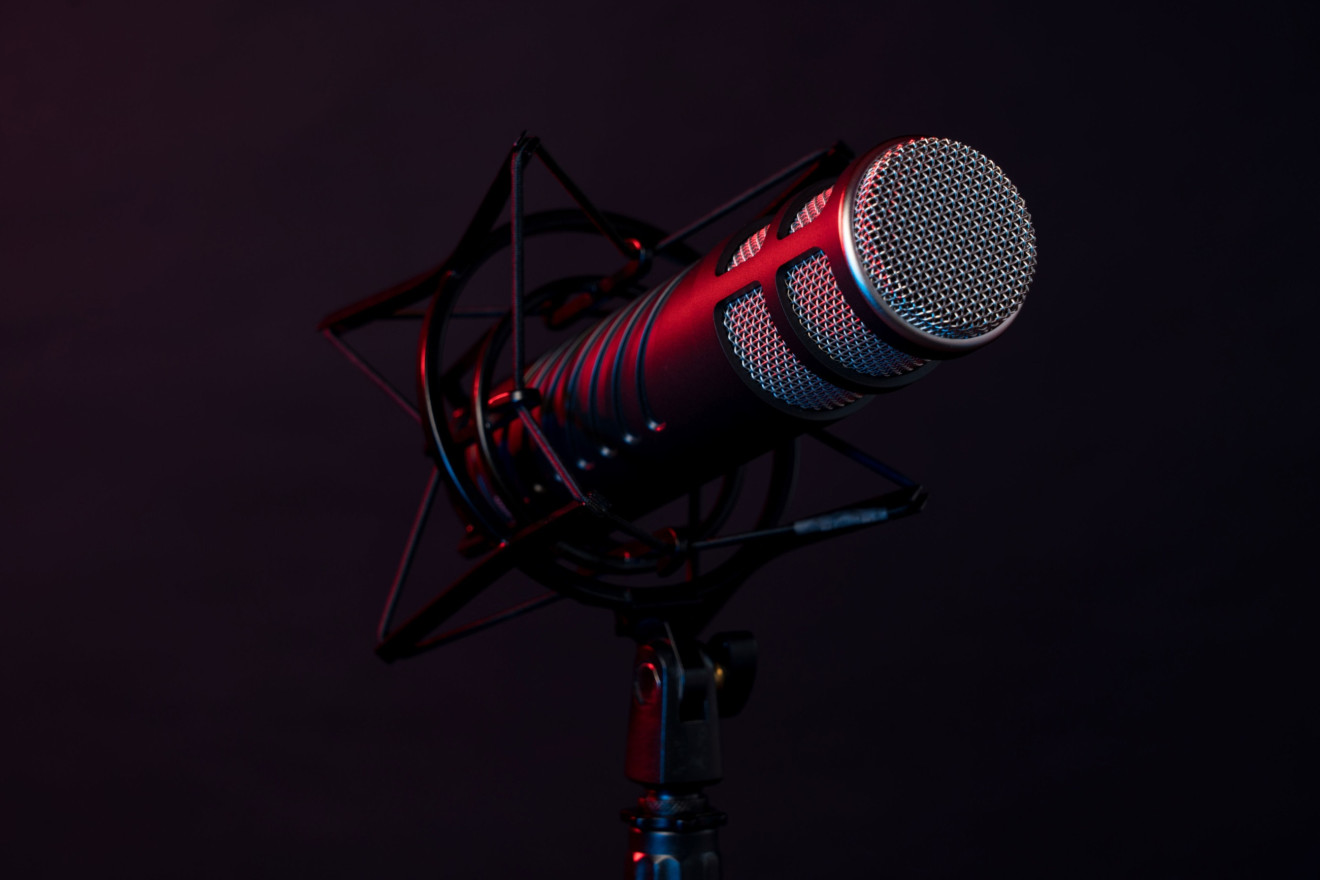Podcasting has become one of the most powerful tools to build your brand and audience. Creating a professional sounding podcast episode comes down to the production, so it’s important to get someone on board who will help produce great sounding content. However, there are lots of things you can do to create a perfect recording environment.

And don’t worry, it’s very normal to feel a bit nervous when recording a podcast (do I know what I’m going to say, is my guest/co-host sufficiently briefed, what if there is a technical hitch, is that REALLY how I sound?!) so make sure you have a producer to guide you throughout your recording so it’s hassle and stress free.
If you use these tips then you’ll have a brilliant sounding episode every time.
#1. Use the right kit
If you want professional sounding content, you should use professional equipment. Phone and laptop microphones can be used but we wouldn’t recommend them. For clear, quality audio you should use a quality microphone and headphones.
TOP TIP: Ask your producers for recommendations on the best kit to use (these don’t have to cost the Earth).
#2. Find the right place to record
Find a quiet room where you can be recorded without being interrupted. A room with soft furnishings and away from sources of noise (colleagues, children, pets etc) is great. Make sure you shut windows to reduce outside sounds and turn off anything in the room which could make a noise, like a phone, watch, alarm etc.
TOP TIP: If you’re stuck in the office, or somewhere with no soft furnishings and you are using a freestanding microphone, see if you can find a way to wedge a cushion behind it. This stops the microphone from picking up any reverberating noise from the room.
#3. Find the right place for your microphone
Ideally, the microphone should be at same height as your mouth with a few inches between. The closer you are to the microphone, the louder your voice will sound, so try and keep a consistent distance from the microphone. Keep your breathing calm and collected with smaller breaths to control those inhales and exhales, otherwise big breaths can creep into the recording and affect the overall sound.
If you are using a microphone on your laptop or headphones, identify where this is and make sure there’s nothing covering it or any clothing obscuring it.
TOP TIP: If you’re using computer software for your recording, you’ll be able to see your levels as you’re delivering. Most programmes have the functionality to show you if you are coming through too loud. Try to keep within the safe ‘Green Zone’.
#4. Wear headphones
If you have more than one speaker or you’re doing an interview style podcast, headphones are a must. If you use your computer speakers, then the bleed can sometimes affect the recording making the editing tricky. Remote capturing software like Zoom or Teams also has built-in technology which can disrupt your guest’s recording if your mic picks up this audio, so headphones are key.
TOP TIP: If you find it hard to hear yourself with headphones on, try leaving one ear off.
 #5. Warm up your voice (and loosen up)
#5. Warm up your voice (and loosen up)
It’s important get your vocal chords going and warm up your voice. It also helps to prepare notes on what you are going to say. Read through a few times to ensure you know it well and can find your flow. When it comes to it, don’t rush – speak slowly and clearly.
TOP TIP: Keep hydrated by drinking water before you start recording. This reduces mouth clicks which we can make when our mouths are dry. It’s fine to have a break if you need some more.
#6. Try keep your body still
Don’t move and sway as you’re recording as this creates unwanted background noise. Also avoid moving things on your desk, shuffling papers, clicking pens etc. The more of your voice is captured, the better the overall quality.
TOP TIP: To help you sit still in your chair, keep your feet firmly down on the floor to centre you.
#7. Create a noise profile and allow for mistakes
Pause at the beginning and end of your recording for a minimum of three seconds. This really helps with the editing process and helps identify and eliminate any background noise during post-production. If you do make a mistake, or include something that you’d rather have removed, just make a mention of it during the recording, then leave a three second pause again and continue with the podcast.
#8. Stay quiet whilst your guests speak
It’s really tempting to treat the recording like a normal conversation but try not drop in phrases like, “yes”, “exactly” and “OK” continually whilst your guests speak. Although it’s very natural it can distract the listeners and your speakers/co-hosts.
TOP TIP: You might want to mute when you aren’t speaking for a significant length of time.
#9. Take a break
Don’t feel like you have the do the entire recording in one sitting. It’s fine to take a break so you can have a drink or stretch your legs.
TOP TIP: You might even want to have a brief chat with a co-host or share an idea that you want to discuss in more detail.
#10. Focus on content
Think about what makes a podcast interesting to you. Professional sounding content is great and it’s important to sound polished for your listeners, however the content needs to be compelling, engaging and needs to make your listeners want to come back for more.
TOP TIP: Why not do your own research by listening to some podcasts you can take ideas from.
What’s really important is working with a podcast producer who has the knowledge and expertise to guide you through the podcast recording in a relaxed and comfrotable way. If you would like to have chat about our podcast services and how we can support you, then please get in touch today.